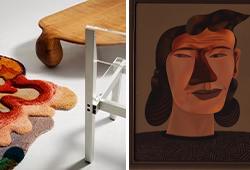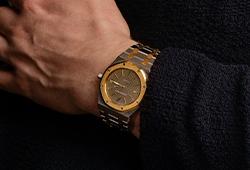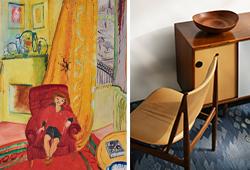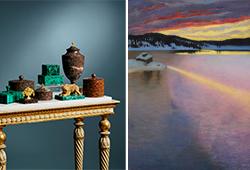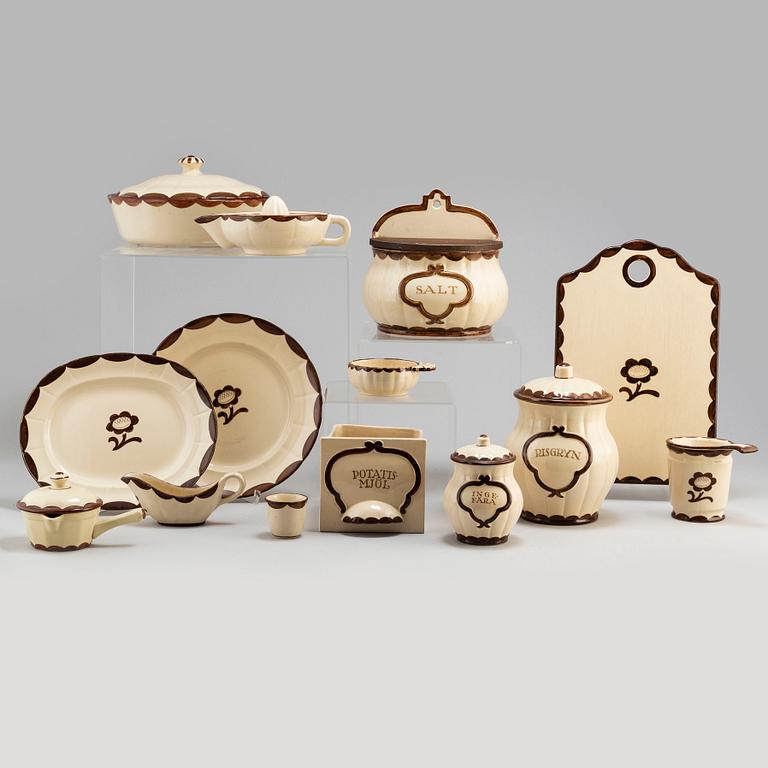Wilhelm Kåge
A 101 piece 'Pyro' creamware service, Wilhlem Kåge, Gustavsberg, 1930s.
bestående av:
6 större burkar med lock, höjd 19 cm
6 mindre burkar med lock, höjd 12 cm
2 burkar med trälock, höjd 18 cm
1 fiskfat med insats, längd 40 cm
3 ovala uppläggningsfat med kant, längd 20-25 cm
4 ovala uppläggningsfat med hänklar, längd 20-25 cm
4 runda uppläggningsskålar med hänkar, diameter 10-21,5 cm
1 skärbräda, längd 30 cm
1 ovalt uppläggningsfat, längd 26 cm
1 ovalt uppläggningsfat, längd 23 cm
2 ovala serveringsskålar, längd 19-22,5 cm
1 oval serveringsskål, längd 26 cm
2 skålar med pip, diameter 14 cm
1 juicepress, längd 18 cm
2 såskannor, längd 14 cm
2 äggkoppar, höjd 4,5 cm
4 ovala serveringsskålar, längd 22,52-29 cm
2 små muggar, höjd 6 cm
1 mugg samt testil, höjd 9,5 cm
2 små karotter med lock, diameter 9,5 cm
1 låda för potatismjöl, höjd 11 cm
10 assietter, diameter 16 cm
2 små skålar med hänklar, diameter 8-9,5 cm
4 djupa tallrikar, diameter 18 cm
1 tallrik, diameter 12,5 cm
7 djupa tallrikar, diameter 23 cm
12 tallrikar, diameter 23 cm
1 tallrik, diameter 21,5 cm
1 karott med lcok, längd 28 cm
1 karott med lock, diameter 22 cm
1 skål med hänklar, diameter 17 cm
1 skål, diameter 15,5 cm
1 tefat, diameter 16 cm
1 kaffefat, diameter 13,5 cm
4 serveringsskålar, diameter 16,5-24,5 cm
1 karott med lock, diameter 20 cm.
Crazing. Cracks. Repairs. Damages. Chips. Discolouration.
Designer
Wilhelm Kåge was a Swedish artist and ceramicist. Kåge is known for his ceramics for the Gustavsberg porcelain factory, where he was the artistic director from 1917 to 1949. Kåge studied from 1910 under Carl Wilhelmson at the Valand Academy of Art in Gothenburg and later under Johan Rohde in Copenhagen, where he became acquainted with Gösta Adrian-Nilsson (GAN) and grew closer to modern art. He studied graphic art in Munich and began his artistic career by designing posters for theatres and exhibitions, among other things. His connection with Gustavsberg was facilitated through the Swedish Society of Crafts and Design, as Gustavsberg needed new products for the Home Exhibition at Liljevalchs in 1917. He went on to design around thirty different dinnerware sets, as well as art pottery, colourful faience, stoneware, and various series of art pottery such as Carrara, Surrea, and Våga. In 1942, Kåge, together with Stig Lindberg, established the Gustavsberg Studio, which became a kind of aesthetic laboratory for art pottery.
At the Stockholm Exhibition in 1930, Kåge presented Gustavsberg's future sales success "Argenta," a series of art pottery primarily glazed in green but also in red, blue, brown, and celadon green, and decorated with various silver designs based on Kåge's sketches. Argenta became very popular and was produced well into the 1970s. The powerful stonewares "Farsta" were also presented at the Stockholm Exhibition and they became the ones closest to Kåge's heart and with which he continued to experiment throughout his life. The pieces improved over the years, and the most impressive and many of the most sought-after items were created by Kåge during the 1950s.









